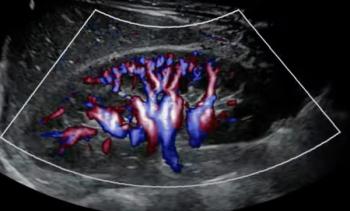
Executive moves at Siemens bring Miller back to the U.S.
German vendor claims lead in global MRI salesThomas Miller's star continues to rise at Siemens. The outspokenexecutive is returning to the U.S. after two years in Germanyas group manager of MRI. Miller's promotion was announced at thismonth's
German vendor claims lead in global MRI sales
Thomas Miller's star continues to rise at Siemens. The outspokenexecutive is returning to the U.S. after two years in Germanyas group manager of MRI. Miller's promotion was announced at thismonth's Radiological Society of North America meeting.
Miller's new position, group vice president of imaging systems,includes operational responsibilities once held by Robert Dumke,president and CEO of Siemens Medical Systems of Iselin, NJ. Dumkehas been promoted to the managing board of Siemens Medical EngineeringGroup in Erlangen, Germany.
Dumke is the first American to serve on the three-person board,which includes Erich R. Reinhardt, chairman of the medical engineeringgroup, and Goetz Steinhardt, CFO of the group. Dumke replacesPeter Grassmann, who is leaving Siemens to take a position aschief executive of the German optical firm Zeiss.
Dumke will retain his position as head of Siemens' U.S. subsidiary.Much of the day-to-day control over operations in the imagingsystems group will fall to Miller, however. Miller will overseeU.S. operations of all modalities that do not have a U.S.-basedmanufacturing plant, including MRI, CT, mammography, x-ray andPACS. Lothar Koob will continue as head of Siemens Ultrasound,Thomas Cafarella as head of Siemens Nuclear Medicine and Pat Boyleas chief of Siemens Oncology Care Systems. All three report toDumke.
Miller was sent to Erlangen in 1992 as the first American namedto lead the vendor's worldwide MRI operations (SCAN 6/3/92). Histenure saw Siemens introduce Magnetom Vision, the first 1.5-teslaMRI scanner with 25 millitesla/meter actively shielded gradientcoils, and Magnetom Open, an open-configuration MRI scanner widelyimitated at this year's RSNA conference.
In 1992 Miller claimed that Siemens' 1-tesla Magnetom Impactscanner had become the best-selling magnet in the world (SCAN12/16/92). This year, he was prepared to go one better: Siemenshas overtaken GE as the market leader in worldwide MRI sales asmeasured by dollar volume, he said.
"It was very pleasing to us," Miller told SCAN. "GeneralElectric held the leadership position for quite some time. Itwas a long battle."
GE executives refuted Miller's claim to MRI ascendancy. Neithercompany is willing to provide the financial data necessary toprove which is king of the MRI hill, however.
Miller did say that Siemens' market share in the U.S. now standsat 32% and in Europe at 50%, measured by value as opposed to unitshipments. In Japan, Siemens is in the number two position. Mostof the market share Siemens has been taking has come from GE,he said.
The many works-in-progress MRI scanners on the exhibit floorof this year's RSNA show were testament to Siemens' lead in thetechnology, he said.
"There are more MRI systems at this show that are notavailable for delivery or FDA-approved than any time since 1983,"Miller said. "We forced (the other vendors) to do it. Let'sface it -- we are delivering Opens. If at this RSNA the otherguys didn't show Opens, we'd scoop a whole year's worth of market."
Newsletter
Stay at the forefront of radiology with the Diagnostic Imaging newsletter, delivering the latest news, clinical insights, and imaging advancements for today’s radiologists.




























